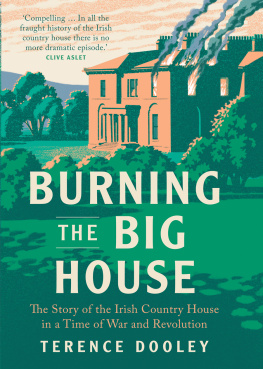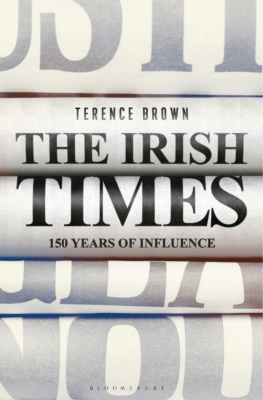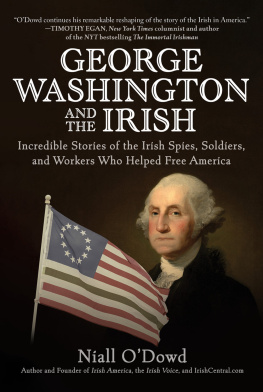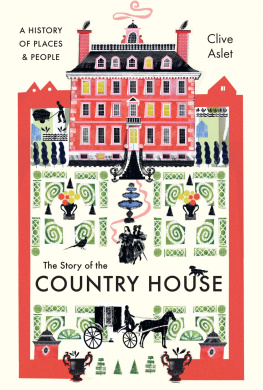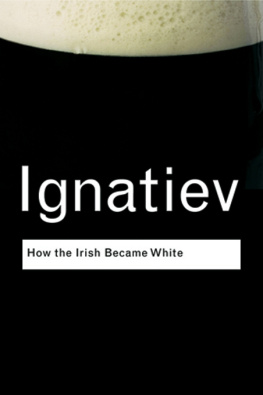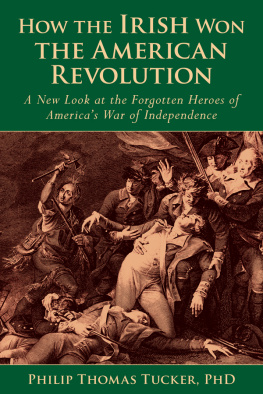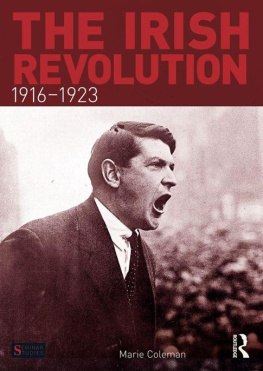BURNING THE BIG HOUSE

Copyright 2022 Terence Dooley
All rights reserved. This book may not be reproduced in whole or in part, in any form (beyond that copying permitted by Sections 107 and 108 of the U.S. Copyright Law and except by reviewers for the public press) without written permission from the publishers.
All reasonable efforts have been made to provide accurate sources for all images that appear in this book. Any discrepancies or omissions will be rectified in future editions.
For information about this and other Yale University Press publications, please contact:
U.S. Office:
Europe Office:
Set in Adobe Garamond Pro by IDSUK (DataConnection) Ltd
Printed in Great Britain by TJ Books, Padstow, Cornwall
Library of Congress Control Number: 2021952546
e-ISBN 978-0-300-26511-8
A catalogue record for this book is available from the British Library.
10 9 8 7 6 5 4 3 2 1
CONTENTS
ILLUSTRATIONS AND MAPS
Illustrations
Maps
ACKNOWLEDGEMENTS
This book was begun at a very exciting time for historians of the revolutionary period in Ireland when a wealth of primary sources, kept under wraps for decades, were being opened in digital format to the research public for the very first time, sources such as IRA pension files, brigade reports and Bureau of Military History Witness Statements. It was finished at a time when access to traditional paper sources in public repositories and private collections were closed because of a global pandemic. I hope any resulting gaps are not too great; if they are, it certainly is not the fault of those who have been so generous with their time and assistance.
For providing access to sources, I would like to thank the keepers and staff in the following repositories and institutions: Cavan County Museum (Savina Donohoe); Clare Co Library (Helen Walsh and Dolores Meaney); Department of Culture, Heritage and the Gaeltacht (Terry Allen and Ronan Whelan); Fingal County Archives (Colm McQuinn); Irish Architectural Archives; Maynooth University Library (Cathal McCauley, Hugh Murphy); Military Archives, Cathal Brugha Barracks; Monaghan County Museum (Liam Bradley); National Archives of Ireland; National Gallery of Ireland; National Library of Ireland (special word of thanks to Berni Metcalfe); OPW-Maynooth Archive and Research Centre (Mary Heffernan, Nicola Kelly); Public Record Office, Northern Ireland (Brett Irwin); Somerset Record Office; The National Archives; Trinity College Dublin, Manuscripts Department; University College Dublin, Archives Department.
When writing a book, one continuously makes demands of colleagues, friends and family, dependent on their generosity to answer queries, testing their patience with follow ups, requesting them to read chapters, looking for information on sources and images, or simply asking to enjoy their convivial company when breaks are required. I am most grateful to the following for one or various combinations of the above: Lord Ashtown, Beaumont-Nesbitt family, Claire Besnyoe, Declan Brady, Laura Servilan Brown, Edward Bujak, Philip Bull, Robin Bury, Fidelma Byrne, Donough Cahill, Adam Coleman, Marie Coleman, Ann Purdon-Coote, Mario Corrigan, Maura Cronin, Emer Crooke, Brian Crowley, Jacqueline Crowley, Ian dAlton, Sir David Davies, Eugene Dunne, Mel Farrell, the late Desmond FitzGerald (Knight of Glin), Brian Fizell, Ronan Foley, David Gahan, Aidan Gilsenan, George Gossip, the late Hon. Desmond Guinness, Charles Hamilton, Emmeline Henderson, Jack Kavanagh, Sir Charles Keane, Susan Kellett, Sammy Leslie, Cora McDonagh, Conor Mallaghan, Declan Mullen, Catherine Murphy, Sean Neary, Robert OByrne (The Irish Aesthete), Dith Corrin, Daniel OReilly, Ann ORiordan, Maeve ORiordan, Eve Power, Lord Roden, Ailbhe Rogers, Brendan Scott, Mattie Shinnors, Den Stubbs (of Stubbs Design), Glascott and Adrienne Symes, Jack Tenison, Robert Towers, Edward Tynan, Lesley Whiteside, Tim Wilson and Jean Young. I am especially indebted to Robert Smith for many of the images used in this book. If I have unintentionally left anyone out who has helped me along the way, I offer my sincere apologies.
I owe a special debt to colleagues in the Centre for the Study of Historic Irish Houses and Estates. I have been privileged to have worked for the best part of two decades with Christopher Ridgway, whose scholarship I greatly admire and whose friendship I greatly cherish. Veronica Barry has helped in numerous ways and always with consummate good humour and patience.
Over the years, I have benefited immensely from the professional support and warm friendship of David Cannadine, Oliver Cox, Shaun Evans, Tony McCarthy, Olwen Purdue, Lowri Rees, Ciarn Reilly, Einion Thomas and Annie Tindley, with whom it has been an absolute pleasure (and very often great craic) to work on various country house and landed estate projects. Donal Hall has helped in a multitude of ways; his sharp insights and droll wit brighten every conversation. I cannot possibly finish a book without thanking my great friend and mentor Vincent Comerford, whose company is always stimulating.
For the length of time this book has been in gestation, I have benefited from the warm friendship and collegiality of academic colleagues and administrative staff in the History Department at the National University of Ireland, Maynooth.
I would like to thank all the undergraduate and postgraduate students I have had the privilege to teach over the years and post-doctoral fellows I have mentored, from whom I have learned so much.
It has been a particular pleasure to work with Yale University Press and I extend my deepest gratitude to Julian Loose for his enthusiasm for this project, Katie Urquhart for keeping it to a tight deadline, and to Eve Leckey for her wonderful copy-editing.
Anyone who has written a book will know how selfish one must be at times, regularly locked away in isolation, if not physical then very often mental. That is when the support of those closest is most important. Annette has always been selfless in her understanding and monumental in her support. Conor and ine grew to adulthood and to find their own place in life during the research and writing of this book. It is an absolute joy to know them as my dearest friends as well as my children.
Finally, this book is dedicated to the memory of my beautiful niece Elaine Tate (ne OHart, 19752021), a dearly loved and greatly missed friend, taken from this life far too soon, but whose memory will forever be cherished.
ABBREVIATIONS
BCA | Birr Castle Archives |
BMH | Bureau of Military History |
CDB | Congested Districts Board |
CICMR | County Inspectors Confidential Monthly Report |
CO | Colonial Office, Dublin Castle Records |
GHQ | General Headquarters |
IAA | Irish Architectural Archives |
IGCMR | Inspector Generals Confidential Monthly Report |
INV | Irish National Volunteers |
IRA | Irish Republican Army |
ITGWU | Irish Transport and General Workers Union |
IUA | Irish Unionist Alliance |
MP | Member of Parliament |
NAI | National Archives of Ireland |
NLI | National Library of Ireland |
NUI | National University of Ireland |
Next page
